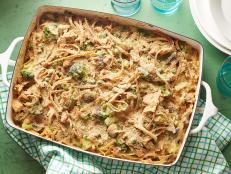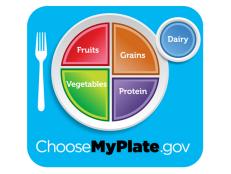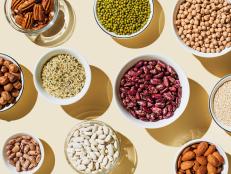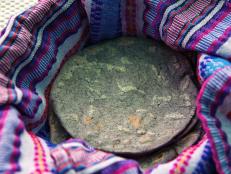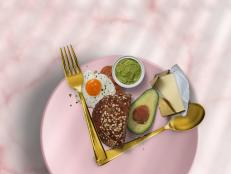Italian Favorites, Lightened Up
Eat all your favorites, like lasagna, eggplant Parmesan, spaghetti and meatballs, fettuccine alfredo and chicken Parmesan, with our lighten-up tips.
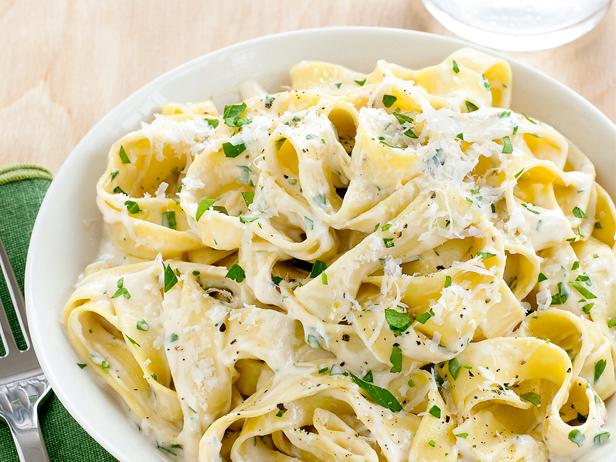
Andrew McCaul
Creamy, cheesy alfredo sauce lightened up? Can it be true? With a few twists, satisfying lower-fat alfredo is possible. Here's how we slim it down.
The Bad News: Fat and Calorie Overload
A typical portion of this decadent dish has 1,200 calories, 75 grams of fat, 47 grams of saturated fat and gives you more than half a day's worth of sodium. Yikes! Looking at a recipe, it’s not hard to figure out why. The star ingredients are buckets of heavy cream, butter, cheese and mountains of pasta.
The Good News: Lightening It All Up
When it comes to these creamy, indulgent dishes, it's better not to try to replace all of the high-fat ingredients completely. Instead, to keep flavor, you simply use less (much less). A little butter, cream and Parmesan go a long way.
Simmering a large amount of heavy cream and butter creates a thick and creamy sauce. But since a single cup of cream has more than 800 calories, only use a 1/4 cup of cream and then add a secret ingredient — light cream cheese! This swap makes the sauce just as silky and only adds a fraction of the fat and calories. Other options are milk thickened with cornstarch, yogurt, part-skim ricotta or chicken stock.
As for the cheese, you’re in luck. Parmesan is naturally lower in fat than many other cheeses, and it has a strong flavor, so you only need a little. One-half cup to 2/3 cup of grated cheese is plenty for a recipe that serves four people (it'll be cheaper, too).
Perfecting Portions
Gigantic servings are where many pasta dishes go wrong. Instead of piles of pasta, serve your fettuccine in single-cup servings along with a lean protein (chicken or shrimp) and some vegetables.
More Healthy Fettuccine Alfredo Recipes:
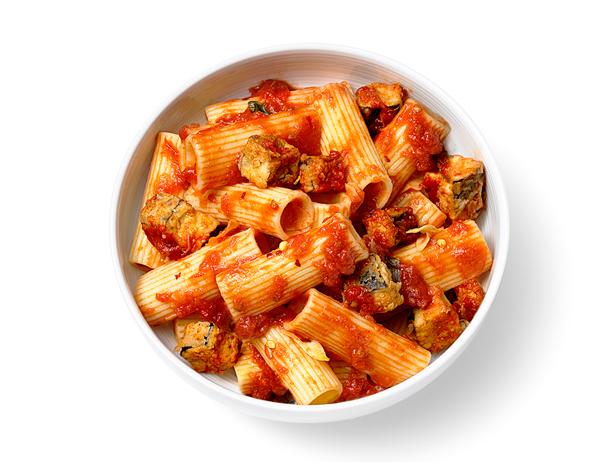
Food Styling: Vivian Lui Prop: Marina Malchin
Eggplant Parmesan
Classic eggplant Parm is cheesy, fried and delicious, but it's easy to cut back on some of the calories and fat and focus on the delicious fresh ingredients. Here are our slim-down tips.
Nutrition Facts
Breaded and fried eggplant packed in layers of oily cheese can make for a casserole with upwards of 300 calories and 20 grams of fat PER CUP (and we all eat more than a cup serving). And that’s not counting the hefty portion of pasta that usually comes alongside it.
Baked (or Grilled), Not Fried
Cooked eggplant has only 30 calories per cup, so the easiest change to make is to forgo the frying and enjoy the eggplant roasted or grilled. When it’s not drenched in oil, the natural flavors really come through. Season thick slices of eggplant with a little olive oil, salt and pepper, then grill or roast until just tender. Add more flavor with dried oregano and a pinch of red pepper flakes. If you prefer to have the eggplant breaded, follow the traditional method of dredging in flour, egg wash and breadcrumbs — transfer to a sheet pan sprayed with nonstick spray and bake until golden.
Top cooked eggplant with large spoonfuls of marinara sauce and a small amount of cheese. Place under the broiler to melt and you’ve got a cheesy (yet sensible) dish. Use one tablespoon of both part-skim ricotta and mozzarella per slice. Cutting back on the calories from oil and cheese makes room for a smart portion of pasta – figure about 1 1/2 cups of cooked pasta per person. Another twist would be to add cubes of eggplant to marinara sauce (pictured) and serve that over pasta with a sprinkle of cheese.
Healthy Eggplant Parmesan Recipes to Try:
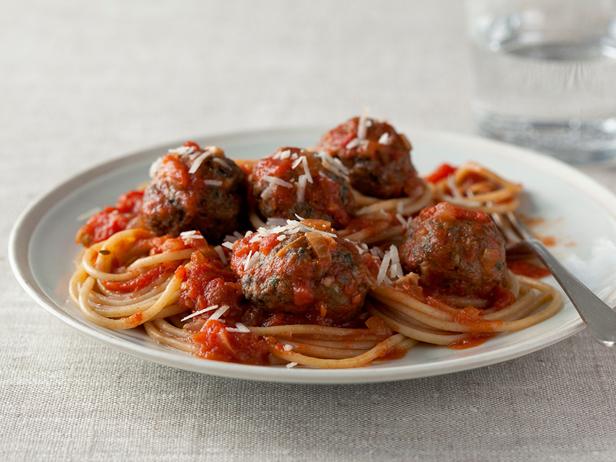
Tara Donne, Tara Donne
Spaghetti and Meatballs
Spaghetti and meatballs are a big deal in many American families, and the idea of slimming down this traditional dish doesn’t always go over well. But since an average portion can have as much as 970 calories and 30 grams of fat, making it healthier when you can is smart. Just take it one step at a time.
Step 1: Pasta
The biggest problem with pasta is the super-size portions. You don't need an entire pound of pasta for four people — that’s double what you should eat at a meal! One cup of cooked pasta (about two ounces of dry pasta) has about 200 calories, so one to one and a half cups of cooked pasta per person is plenty.
Whole-grain pastas have about the same amount of calories as white pasta, but there’s the added benefit of vitamins, protein and fiber. Many folks aren’t fond of the flavor combo of the whole-wheat pasta, which tastes nuttier, with tomato sauce. If that’s you, stick to regular pasta for your spaghetti and meatballs and use whole wheat pasta in other dishes. You can also try experimenting with other types of whole-grain pasta. Or, try brown rice pastas like Tinkyada. This brand has the goodness of whole grain with a milder flavor.
Step 2: Sauce
Sauce can work for you or against you. Many family-recipe "gravies" are typically flavored with fatty meats such as sausage in addition to the meatballs. For special occasions and family gatherings, don't change a thing. For everyday spaghetti, keep the sauce on the lighter side by making your own with small amounts of olive oil and lots of low-calorie tomatoes, onions, garlic and basil. Cooked tomatoes are also a great source of the antioxidant lycopene. If you're buying the jarred stuff, look for the plain varieties, not the meat- or cheese-filled ones.
Step 3: Meatballs
Most meatballs feature a combo of ground veal, beef and pork (often called "meatloaf mix"); swap that for 90 percent lean beef or ground turkey breast. Lean meats have less fat, which means less moisture and flavor, but you can make up for that by adding onions, mushrooms, breadcrumbs, ricotta cheese or a splash of milk to your meat mixture. Diced tofu can also help make lighter meatballs and won't affect the taste much because tofu takes on the flavors around it. Add even more pizzazz with fresh herbs and spices.
Meal Prep Tip: Though tempting, pass on the extra breadsticks and piles of shredded cheese on top of your spaghetti. These easily add hundreds of calories! Try a light sprinkle of Parmesan and pair your pasta with a large salad instead of bread.
Healthier Spaghetti and Meatball Recipes to Try:
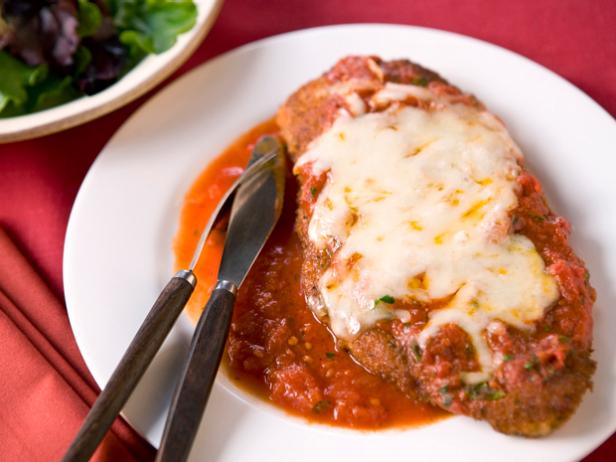
Chicken Parmesan
Classic chicken Parmesan comes breaded, fried and smothered in mozzarella cheese and then served alongside a plate of pasta. With all that, an order at some restaurants can tip the scales at 1,500 calories and 80 grams of fat per serving. Here's how to get the same flavor minus the extra fat.
Baked (or Grilled or Sauteed) — Not Fried
Breaded chicken cutlets don’t have to be cooked in cups of oil. Make them less greasy by sautéing them in a nonstick pan with a few teaspoons of oil or baking them in the oven with a spritz of cooking spray. For each tablespoon of oil you cut out, you save 120 calories and 14 grams of fat.
For the breading, use the traditional combination of flour, egg and breadcrumbs. I like a mix of Italian seasoned breadcrumbs and plain panko ones for an extra crispy and flavorful crust. If you want to forgo the breading completely, try marinating boneless, skinless chicken breast in Italian dressing and then grill or roast them. Also mind your chicken portion -- stick to 4 to 5 ounces of breast meat (raw) or 3 or 4 chicken tenders per serving.
The Toppers: Sauce and Cheese
Cooked tomatoes are a terrific source of the antioxidant lycopene. When made with a small amount of olive oil, tomato sauce is a low-calorie way to add big flavor. Pour on as much sauce as you like.
Now, the cheese — that's another story. When you drown something in cheese, all you taste is cheese (and the calories and fat skyrocket.)Save calories and preserve the flavor of a tangy sauce by using a light sprinkling. Use fresh or shredded part-skim mozzarella and some freshly grated Parmesan for a salty bite. Beside, when you add layers of cheese to the chicken, it takes forever to melt in the oven. Figure on about 1 tablespoon of each type of cheese per person, pop everything in the oven to melt and your meal will be ready faster.
Adding in the Pasta and Bread
Most chicken parm comes with a (huge) side of pasta or maybe some Italian bread. If you're opting for a chicken parm sandwich, there's the hoagie bread to factor too. Pasta weighs in at 200 calories per cup, so serving your cheesy chicken atop it will quickly push calories over the limit. If you want a small taste, keep your pasta portion to a half cup (or 100 calories.) A large chunk of Italian bread to go with dinner will also add a minimum of 100 calories. Just think what that huge sandwich roll means! Your chicken is already breaded; leave it at that.
Tips for Dining Out
Many folks save a dish like chicken parm for when they go out to eat. Keep these tips in mind when placing your order:
-Save a heavy, cheesy dish like this for a special occasion, not part of your weekly selection.
-Share one order or get half wrapped to take home.
-Pass on the side of pasta and get a salad instead.
Recipes to Try:
Food Network Kitchen’s Chicken Parmesan (shown above)
20-Minute Chicken Parmesan (from Recipezaar)
NEXT: Lasagna, Lightened Up

Tara Donne, Tara Donne
Lasagna
With meat, cheese and oodles of pasta, it’s no wonder this bad boy carries a hefty total of 1,000-plus calories per serving. But you can create a lasagna masterpiece that is leaner — and here’s how.
The Noodles
Lasagna is usually a big meal that works well for a crowd or leaves lots of leftovers. If you're worried you're going to overdo your portions, a good idea for cutting calories is using half the noodles in the box and creating a smaller lasagna plate.
Switching to whole-wheat noodles won’t cut calories, but will add fiber. Most people don’t get the recommended 28 to 40 grams of fiber per day, so every little bit helps!
If you want to cut out pasta altogether, use portobello mushrooms, zucchini or yellow squash or thinly sliced eggplant instead. Layer them as you do the lasagna noodles and you’ll be pleasantly surprised.
The Meat
Ground chuck is the fattiest choice for your ground beef. Look for 90 to 95 percent lean ground beef. Use half to a third of the amount your recipe calls for. You can also mix various lean meats with the beef such as ground bison, veal or turkey.
Another idea is combining half the ground beef with beans or chopped mushrooms, which adds tons of fiber, flavor and easily cuts out fat.
Want to get adventurous? Try combining texturized vegetable protein (a.k.a. "TVP") with half the ground beef. TVP is made from soy, which has no cholesterol and is high in protein. Better still, it picks up the flavor of whatever you combine it with.
The Cheese
Choose part-skim ricotta and mozzarella. You might think adding grated Parmesan is harmless, but half a cup adds 200 calories and 14 grams of fat alone. Sprinkle a tablespoon or two for added flavor or forgo if you can.
The Sauce
Create a tomato sauce with crushed and diced tomatoes, onions, garlic and lots of low-calorie fresh herbs such as parsley and basil. Add as little oil as possible (if any) as it’s 120 calories per tablespoon. If using prepared sauces, avoid those made with highly processed ingredients such as high-fructose corn syrup.
A Winning Combination
When it comes to the final filling mix, more isn’t always better. Aim for less meat and cheese and more veggies. You can also forgo the meat and just use cheese and veggies.
Healthy Lasagna Recipes To Try
This article was written by Toby Amidor and Dana Angelo White, registered dietitians and nutrition experts at FoodNetwork.com's Healthy Eats.
























